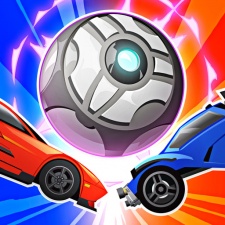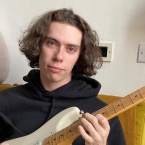In our Making Of series, PocketGamer.biz reaches out to developers to learn more about the process of releasing a video game and highlight the extensive work that goes unseen in the background.
This week, we spoke with Psyonix gameplay programmer Bethany Leuenberger and designer Robert Garza about Rocket League Sideswipe
Where did the initial idea for Rocket League Sideswipe come from?
Bethany Leuenberger: Dave (Hagewood, Psyonix founder) had been playing some mobile games that he enjoyed and felt like it demonstrated that there was a market for a car soccer game on mobile that the Rocket League brand wasn’t currently tapping into. That’s where the core of the idea started for me at least, and I worked on it part-time for a while until enough of it had taken shape that others started to jump on.
How long did development take, and how many people worked on the game?
Both: Development of the initial prototype started in April of 2018. The initial development started with three people, and scaled to a core team of about eight developers with additional support from departments like QA, customer support, marketing, and more.
There was a market for a Rocket League-esque car soccer game on mobile that the brand wasn’t currently tapping intoBethany Leuenberger
What was the biggest challenge or setback you had to overcome during development?
Robert Garza: While developing Sideswipe, the studio was taking Rocket League free to play. Not only did we have to balance development priorities, but the design paradigm shift that Rocket League underwent had knockdown impacts on Sideswipe as well. We had to keep the design of Sideswipe flexible and at times nebulous in order to be in a position to pivot if the player's expectations for what a Rocket League game is shifted. Keeping up with all the changes and doing this all as a tiny group of developers in a pandemic was a big challenge.
Leuenberger: Being a tiny team working on an unproven idea during a very busy time for the studio with many competing priorities could be a balancing act with trying to keep the game moving without distracting from established projects.
Were there additional stages in developing a game with an already established IP?
Garza: Once the prototype was done, we had a series of playtests with employees who were very skilled at Rocket League. Making sure the game gave our most hardcore players the same feelings they had when playing Rocket League was really important to us.
I firmly believe Rocket League longevity comes from its high skill ceiling and mechanics that give people ample opportunities for skill expression. It was important that Sideswipe retained that same appeal, and testing with the best players in the office and making them happy while also giving them something new was a critical part of our path to success.
Leuenberger: Since we’re working with an established IP many of our playtesters and eventual players bring assumptions about how Rocket League works. This is mostly a boon as many players have a basic understanding and enthusiasm for the core concept. However, anytime we diverge from the gameplay of Rocket League, that decision becomes a potential sticking point. Any difference can add friction.
As an example, in Sideswipe you can fly just by pointing your car upwards with the joystick and boosting, jumping isn’t strictly necessary. This mechanic makes maneuvering the car off the ground much more natural and makes your trajectory easier to judge, and looking back is the obvious solution, but it was very hard to break the muscle memory and expectations early playtesters brought with them.
At what stage in development did you feel you had a game that you were happy with?
Garza: For me, each playtest across the development of the game were their own mini milestones to the goal of making a game we are happy with.
The first playtest was super early; about 20 minutes of four people sitting shoulder to shoulder playing on the same screen with keyboard and controllers, just laughing and really coming to terms that there might be a game worth chasing here.
The second playtest that comes to mind was our 'company unveiling', where we hooked a phone up to the projector and played a live match in front of everyone. As if it was scripted, the match went to overtime, and the crowd of employees was really bought into the action.
We felt confident that the game would appeal to casual and non-Rocket League playersRobert Garza
The third playtest that solidified our path was with the employee we feel is one of the best at main Rocket League (ranked Grand Champion at the time). By then, we felt confident that the game would appeal to casual and non-Rocket League players, but we weren't sure the game would be appreciated by the most devout Rocket League players. Seeing a Grand Champion not only enjoy the game but ask time and time again for rematches sold me that we were onto something.
The final step in me being confident we had a game I (and the whole team) could be happy with was when we released the build for a regional limited alpha test for four days back in March. The response from our Rocket League fans was overwhelmingly positive, and being able to see the game played live and for players to quickly become better at it than I am was a feeling like no other. That was the last straw to making me confident in the game we built.
Leuenberger: For me it was less any specific moment and more a gradual feeling that built up as we playtested and people kept wanting to pick it up and play, even if they weren’t necessarily working on the project. I think a lot of the time when making a game you have to provide some amount of the enthusiasm and energy for what you’re building to get people interested and invested, even internally, and at some point I realised the game had started doing that for me.
What did you learn from the soft launch period, and were there any changes you enacted as a result?
Garza: We did not have a soft launch, but a regional limited alpha test in March. We did learn quite a bit from our test on how quickly players would climb our rank ladder and burn through our content progression. We were able to tune both of those: by adding additional required wins to reach the top of the rank ladder and tuning the soft currency pricing of in-game shop items.
How happy are you with the game's launch so far?
The mobile player base generally expects more frequent updatesRobert Garza
Garza: Insanely. We were able to achieve number one spot on top free on iOS and Google before our Season One launch marketing had kicked in, and since then have continued to grow. The team was also able to quickly solve the critical bugs that we didn’t catch pre-launch, keeping our players happy and our ratings high.
Leuenberger: Extremely happy! Making a game is really hard and I’m happy just knowing there are people playing and enjoying the game who I’ve never met and didn’t have to pitch the concept to myself.
How are you approaching live ops? What can you tell us about your plans in terms of updates?
Garza: Our current approach mirrors what we do on the PC/console Rocket League, which is a healthy cadence of seasonal updates that bring new content, goals, and changes to the game. The mobile player base generally expects more frequent updates, and thus we are planning on having shorter seasons in Sideswipe.
To be honest though, this is an evolving approach as we are still learning every day how our players burn through our content and what changes will make them happiest.






















